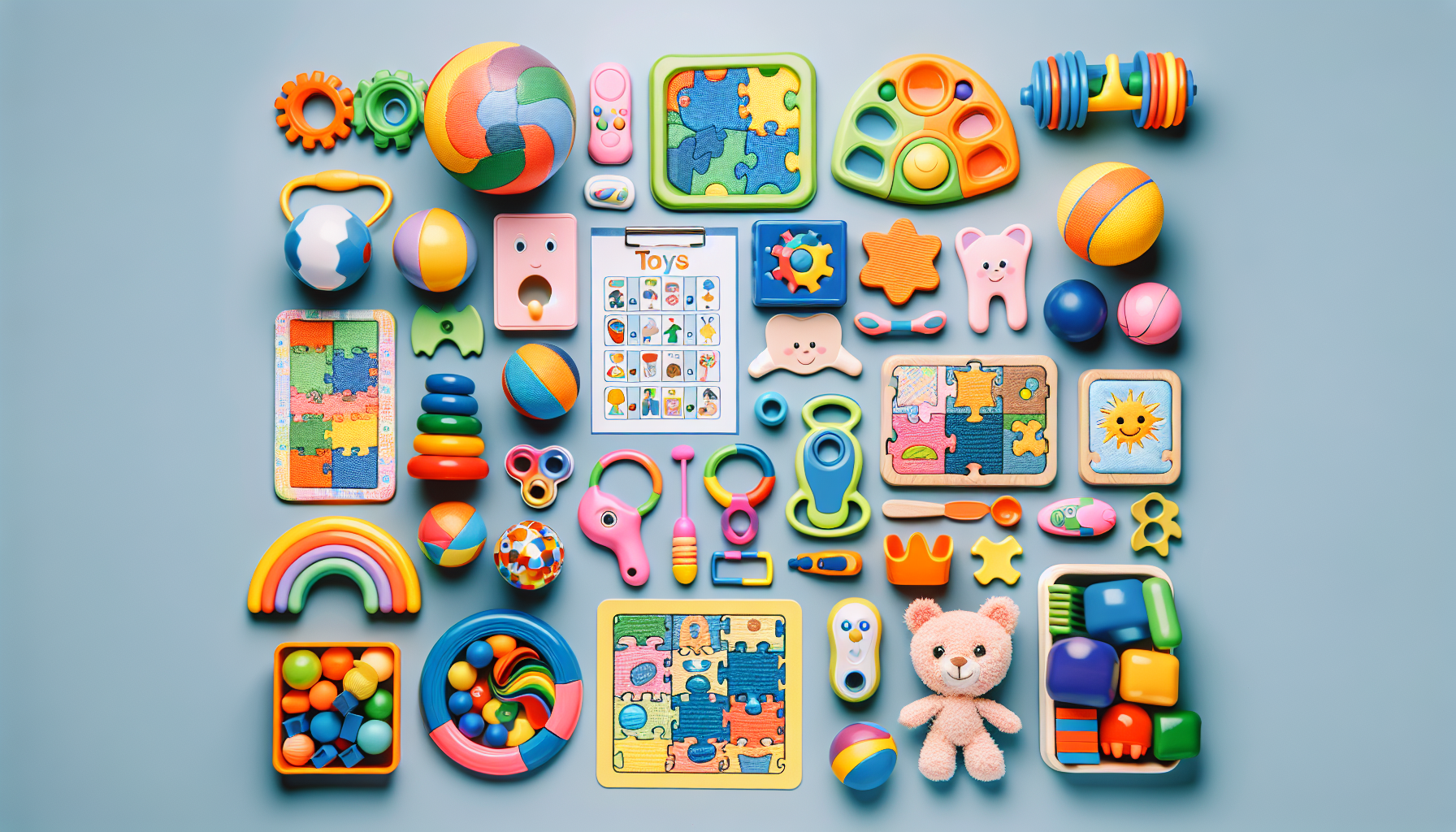Exploring Disorders Like Autism
Explore the diverse world of autism spectrum disorders. From Asperger's to Rett syndrome, uncover the complexities of these conditions.

Understanding Autism Spectrum Disorders
Autism Spectrum Disorder (ASD) is a neurological and developmental disorder that affects how individuals interact with others, communicate, learn, and behave. It is referred to as a "spectrum" due to the wide range of signs and symptoms, as well as the varying impacts and support needs that individuals may experience. While symptoms generally appear in the first two years of life, it is possible for autistic adults to remain undiagnosed.
What is Autism Spectrum Disorder?
Autism Spectrum Disorder is described as a "developmental disorder" by the National Institute of Mental Health (NIMH) [2]. It is characterized by challenges in social interaction, communication difficulties, and restricted and repetitive behaviors. These challenges can vary in severity, ranging from mild to severe, and may impact individuals differently.
Diagnosis of ASD is primarily based on behavioral observations, in-person evaluations, and self-reported symptoms. There are currently no specific diagnostic criteria for adults, but clinicians can adapt and use the DSM-5 criteria for this age group. Health care providers diagnose ASD by evaluating a person's behavior and development, with reliable diagnosis possible by age 2 [2]. It is important to note that there are no medical tests available for diagnosing ASD, regardless of age, and the diagnosis process relies on comprehensive evaluations.

Diagnosis and Evaluation
The diagnosis of Autism Spectrum Disorder involves looking for signs of developmental delays at regular checkups. If symptoms are present, a specialist, such as a child psychiatrist, psychologist, pediatric neurologist, or developmental pediatrician, will conduct a comprehensive evaluation due to the wide variation in symptoms and severity of the disorder [3]. This evaluation may include:
- Detailed discussions with parents or caregivers regarding the individual's behavior and development.
- Observations of the individual's behavior, communication, and social interactions.
- Assessment tools and questionnaires that help evaluate the individual's developmental progress and identify any red flags.
- Collaboration with other professionals, such as speech therapists and occupational therapists, to gather additional information.
It is crucial to diagnose ASD as early as possible for timely initiation of treatments and services. Early diagnosis allows for early intervention, which can significantly improve outcomes for individuals with ASD. However, due to the broad range of symptoms and severity levels, diagnosing ASD can be challenging, and specialists rely on a comprehensive evaluation [3].
Understanding the diagnosis and evaluation process is essential for recognizing and addressing Autism Spectrum Disorder. With early intervention and ongoing support, individuals with ASD can lead fulfilling lives and reach their full potential.
Types of Autism Spectrum Disorders
Autism Spectrum Disorder (ASD) encompasses a range of conditions that affect individuals' social interaction, communication skills, and behavior. Within the spectrum, there are several specific disorders that fall under the ASD umbrella. These include Asperger's Syndrome, Autistic Disorder, Childhood Disintegrative Disorder, Rett Syndrome, and Pervasive Developmental Disorder Not Otherwise Specified (PDD-NOS).
Asperger's Syndrome
Asperger's Syndrome, although reclassified as part of the broader ASD category in the DSM-V, is still recognized by many individuals. It is characterized by difficulties in social interaction, repetitive behaviors, and a strong interest in specific topics. While sharing similarities with "standard" autism, Asperger's Syndrome may present differently in individuals.
Autistic Disorder
Autistic Disorder, an older term, is positioned further along the autism spectrum than Asperger's Syndrome and PDD-NOS. It encompasses similar symptoms but at a more intense level. Individuals with Autistic Disorder often experience challenges in social interactions, communication, and exhibit repetitive behaviors [5].
Childhood Disintegrative Disorder
Childhood Disintegrative Disorder is the rarest and most severe part of the autism spectrum. It typically manifests between the ages of 2 and 4, with children rapidly losing social, language, and mental skills. This regression is often accompanied by the development of a seizure disorder.
Rett Syndrome
Rett Syndrome, although no longer considered a developmental disorder under the ASD umbrella in the DSM-V, is worth mentioning. It primarily affects girls and is linked to mutations in the MECP2 gene. Rett Syndrome causes severe cognitive, social, and physical impairments. It is a neurodevelopmental disorder that results in significant challenges in motor skills, language, and social interaction.
Pervasive Developmental Disorder Not Otherwise Specified (PDD-NOS)
Pervasive Developmental Disorder Not Otherwise Specified (PDD-NOS) was a diagnosis used as a "catch-all" for individuals who didn't meet the DSM-IV criteria for autism but displayed developmental delay symptoms and difficulties. In the DSM-V, PDD-NOS was reclassified as ASD to ensure a more standardized diagnosis and criteria for individuals within the autism spectrum.
Understanding the different types of autism spectrum disorders helps in recognizing the wide range of characteristics and challenges individuals may face. Each disorder has its unique features, and a comprehensive understanding allows for more targeted interventions and support.
Symptoms and Behaviors
Autism Spectrum Disorders (ASD) are characterized by a range of symptoms and behaviors that can vary in severity and presentation. Understanding these symptoms and behaviors is crucial for recognizing and supporting individuals with ASD. The two main categories of symptoms and behaviors associated with ASD are social and communication challenges, as well as repetitive behaviors.
Social and Communication Challenges
People with ASD often exhibit difficulties in social interaction and communication. These challenges can manifest in various ways, including:
- Difficulty with nonverbal communication: Individuals with ASD may struggle to understand and interpret nonverbal cues, such as facial expressions, body language, and gestures. This can make it challenging for them to effectively communicate and understand others.
- Difficulty developing and maintaining relationships: Building and maintaining relationships can be challenging for individuals with ASD. They may struggle with initiating and sustaining conversations, making and keeping friends, and understanding the social dynamics involved in relationships.
- Lack of shared enjoyment in activities: People with ASD may have difficulty engaging in and sharing enjoyment during social activities. They may find it challenging to participate in activities that involve cooperation, collaboration, or shared interests.
It's important to note that the severity of these social and communication challenges can vary widely among individuals with ASD. Some may require more support and intervention in these areas, while others may exhibit milder difficulties.
Repetitive Behaviors
Individuals with ASD often exhibit repetitive behaviors, which can be both physical and cognitive in nature. These behaviors serve as a way for individuals to cope with their environment and manage their anxiety or sensory sensitivities. Common examples of repetitive behaviors include:
- Repeating actions or phrases: People with ASD may engage in repetitive movements, such as hand-flapping or body rocking. They may also repeat certain words or phrases.
- Adherence to routines: Individuals with ASD often thrive on routine and predictability. They may become upset or anxious if their routines are disrupted or changed.
- Intense interests: Many individuals with ASD develop intense interests or fixations on specific topics. They may spend significant amounts of time learning about and engaging with these interests.
- Sensory sensitivities: People with ASD may have heightened sensitivity or hypo-reactivity to sensory input, such as noise, touch, or taste. This can result in either seeking out or avoiding certain sensory experiences.
It's important to remember that these behaviors can vary greatly among individuals with ASD. While some may display more noticeable repetitive behaviors, others may exhibit milder or less frequent patterns.
By understanding the social and communication challenges as well as the repetitive behaviors associated with ASD, we can better support individuals on the autism spectrum and create environments that promote their well-being and growth.
Causes and Risk Factors
Understanding the causes and risk factors associated with autism spectrum disorders (ASD) is essential in gaining insights into the origins of these conditions. While there is no single known cause for ASD, researchers believe that both genetic influences and environmental factors play a role in its development.
Genetic Influence
Genetics is considered a significant factor in the development of autism spectrum disorders. According to the National Institute of Mental Health (NIMH), certain genetic conditions and advanced parental age are associated with an increased likelihood of developing ASD. Although specific genes have been identified as potential contributors, the genetic landscape of ASD is complex and varies among individuals.
Research suggests that a person's genes can interact with aspects of their environment, resulting in atypical development associated with ASD. The interplay between genes and their environment is believed to contribute to the development of the disorder.
Environmental Factors
In addition to genetic influences, environmental factors are also thought to contribute to the development of autism spectrum disorders. While the exact environmental factors that may increase the risk of ASD are not fully understood, researchers continue to investigate various possibilities.
Environmental factors associated with an increased likelihood of developing ASD may include very low birth weight and other prenatal factors. However, it is important to note that these factors do not directly cause ASD but may contribute to increased susceptibility to the disorder.
It is crucial to recognize that the causes of ASD are multifaceted and likely involve a combination of genetic and environmental factors. The complex nature of the disorder and the wide variation in symptoms and severity make it challenging to pinpoint a single cause. Ongoing research in this field aims to shed further light on the interplay between genetics and the environment, allowing for a deeper understanding of ASD development.
Treatment and Therapies
When it comes to the treatment and therapies for individuals with autism spectrum disorders, there are various options available. These therapies aim to address the unique challenges faced by individuals with autism and help improve their overall quality of life. Here are some commonly used treatment and therapy approaches:
Play Therapy
Play therapy, such as Floortime, Integrated Play Groups (IPGs), and Joint Attention Symbolic Play Engagement and Regulation (JASPER), can play a significant role in helping children with autism develop their social and emotional skills, language and communication skills, and interaction with peers. Through structured play sessions, children engage in activities that promote social engagement, creativity, and problem-solving. This therapeutic approach can lead to improvements in various areas of development.
Occupational Therapy
Occupational therapy for children with autism focuses on enhancing their skills for daily living activities, social interaction, behavior, and classroom performance. This therapy aims to improve the individual's ability to function independently and participate in everyday activities. Occupational therapists work closely with individuals with autism to develop strategies that address their specific needs, allowing them to enhance their quality of life at home and in school [7].
Speech Therapy
Speech therapy is a crucial component of autism treatment, as it helps individuals with autism improve their speech, communication, and interaction with others. Speech-language pathologists work closely with individuals, families, schools, and other professionals to develop strategies that enhance communication skills. The therapy focuses on improving language comprehension, expressive language abilities, and social communication skills, allowing individuals with autism to better connect with others.
Applied Behavior Analysis (ABA) Therapy
Applied Behavior Analysis (ABA) therapy is a widely recognized and evidence-based approach used to treat autism spectrum disorders. ABA therapy focuses on the principles of learning theory, using positive reinforcement to reinforce positive behaviors and teach new skills. This therapy can have a significant impact on the development of individuals with autism, leading to improvements in communication, social skills, personal care, and academic performance. Early and intensive ABA therapy has been shown to yield substantial and lasting gains.
Therapeutic Horseback Riding
Therapeutic horseback riding, also known as hippotherapy, can be beneficial for children with autism. This form of physical therapy involves engaging individuals with autism in horseback riding activities, which can help improve their social and speaking skills. Additionally, therapeutic horseback riding has been shown to reduce irritability and hyperactivity in children with autism. Research suggests that children between the ages of 5 to 16 can benefit from this form of therapy.
These treatment and therapy approaches are just a few examples of the options available for individuals with autism spectrum disorders. It's important to work closely with healthcare professionals and therapists to determine the most suitable interventions for each individual's unique needs. With early intervention and ongoing support, individuals with autism can make significant progress and lead fulfilling lives.
Managing Autism Spectrum Disorders
When it comes to managing Autism Spectrum Disorders (ASD), early intervention, ongoing support, future planning, and considering complementary therapies are important aspects to consider.
Early Intervention
Early intervention plays a crucial role in supporting individuals with Autism Spectrum Disorders. Signs of ASD often appear early in development, with delays in language skills and social interactions being noticeable. Diagnostic tests may be recommended by healthcare professionals to identify any delays in cognitive, language, and social skills.
By identifying and addressing these challenges at an early stage, children with ASD can receive tailored interventions to help them acquire essential social, communication, functional, and behavioral skills. Early intervention programs during the preschool years have shown effectiveness in supporting development and learning.
Ongoing Support
Children with ASD typically continue to learn and adapt throughout life, but many will require ongoing support. It is crucial to provide ongoing support to individuals with ASD to help them navigate various aspects of life, including education, social relationships, and daily living skills.
Ongoing support may involve therapies such as speech therapy, occupational therapy, and applied behavior analysis (ABA) therapy. These therapies can help individuals with ASD develop and enhance their communication, motor skills, and behavioral patterns. Additionally, support can be extended through educational programs, community services, and support groups.
Future Planning
Planning for the future is an essential aspect of managing ASD. As individuals with ASD transition into adulthood, it is important to consider future opportunities such as employment, higher education, and independent living arrangements. Planning for necessary services and support systems can facilitate a smoother transition into adulthood.
Collaboration with healthcare professionals, educators, and other support services can help develop comprehensive plans that address the unique needs and goals of individuals with ASD. By considering long-term goals and creating a roadmap for the future, individuals with ASD can have a more structured and fulfilling life.
Complementary Therapies Consideration
While alternative or complementary therapies are sometimes sought out for managing ASD, it is important to approach them with caution. Many of these therapies lack substantial research evidence to prove their effectiveness, and some may even reinforce negative behaviors or pose potential dangers.
Before considering any alternative therapies, it is recommended to consult with healthcare providers or professionals specializing in ASD. They can provide guidance and help determine the appropriateness and safety of complementary therapies for an individual's specific needs. Relying on evidence-based interventions and treatments is crucial for the effective management of ASD.
By focusing on early intervention, providing ongoing support, planning for the future, and considering evidence-based therapies, individuals with Autism Spectrum Disorders can receive the necessary assistance to thrive and reach their full potential.
References
- [1]: https://www.healthline.com/health/autism-in-adults
- [2]: https://www.nimh.nih.gov/health/topics/autism-spectrum-disorders-asd
- [3]: https://www.mayoclinic.org/diseases-conditions/autism-spectrum-disorder/diagnosis-treatment/drc-20352934
- [4]: https://spectrumofhope.com/blog/5-different-types-of-autism/
- [5]: https://www.webmd.com/brain/autism/autism-spectrum-disorders
- [6]: https://www.mayoclinic.org/diseases-conditions/autism-spectrum-disorder/symptoms-causes/syc-20352928
- [7]: https://www.webmd.com/brain/autism/therapies-to-help-with-autism
Find More Articles
Contact us
North Carolina, Tennessee, Nevada, New Jersey, Utah, Virginia
New Hampshire, Maine
Massachusetts, Indiana, Arizona, Georgia
.avif)





























.jpeg)












































.jpeg)









.jpeg)
.jpeg)



.jpeg)











